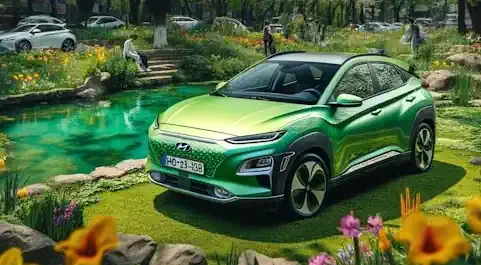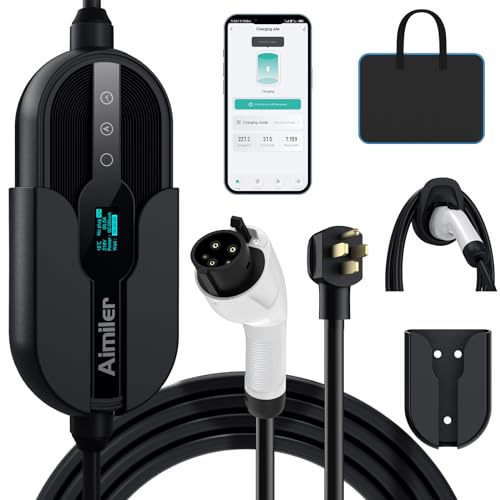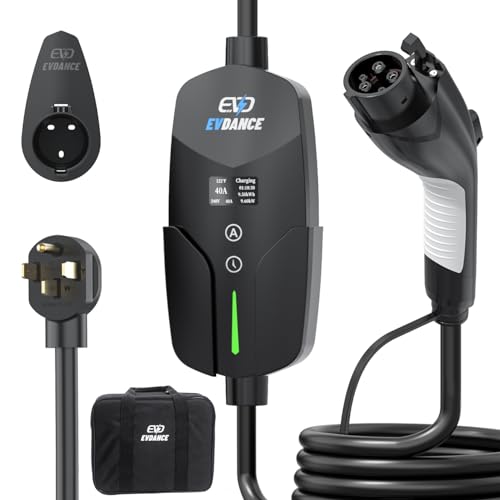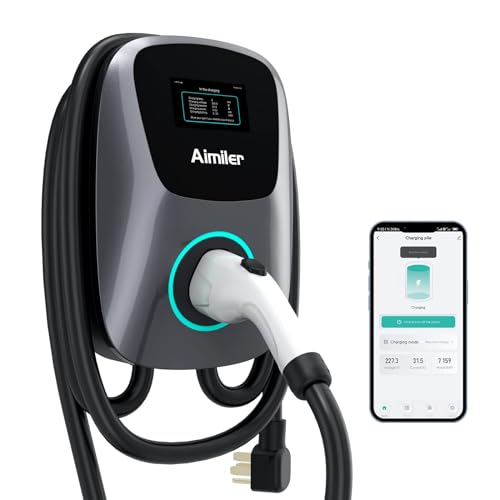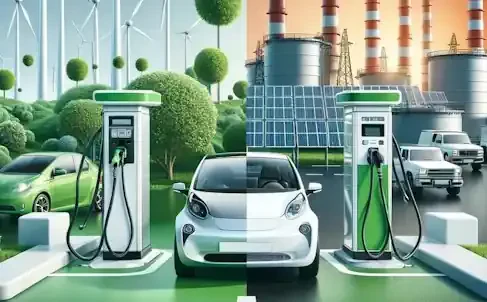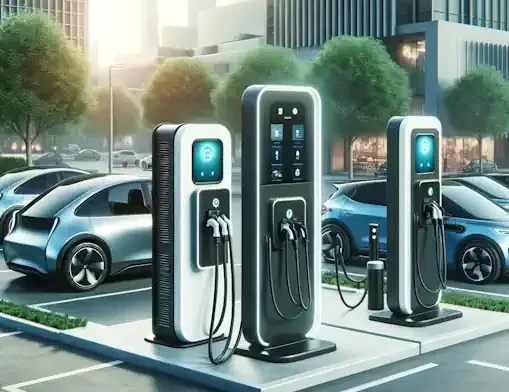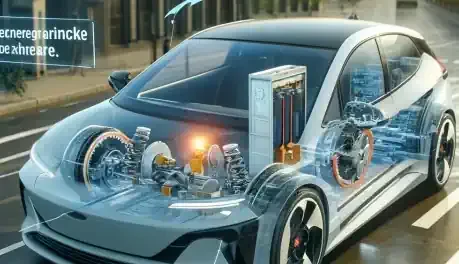As the world grapples with the urgent need to mitigate climate change and reduce our reliance on fossil fuels, the automotive industry stands at a pivotal crossroads. In recent years, there has been a dramatic shift towards electric vehicles (EVs) as a cleaner and more sustainable mode of transportation. This shift is not merely a trend but a fundamental transformation in the way we conceive of mobility.
Brief overview of the rise of electric vehicles (EVs) in the automotive industry
Electric vehicles have a rich history that predates the internal combustion engine. In the late 19th and early 20th centuries, electric cars were popular, offering quiet and smooth rides compared to their noisy, smelly gasoline counterparts. However, the mass production of gasoline-powered vehicles by companies like Ford and the development of the interstate highway system led to the decline of electric cars by the 1920s.
It wasn't until the late 20th century that interest in electric vehicles resurged, driven by concerns over air pollution, oil dependency, and climate change. Innovations in battery technology, coupled with government incentives and environmental regulations, laid the groundwork for the modern electric vehicle revolution.
Importance of transitioning to sustainable transportation
The transportation sector is a significant contributor to greenhouse gas emissions, accounting for approximately one-quarter of global CO2 emissions. Gasoline and diesel-powered vehicles not only emit pollutants that harm human health and the environment but also exacerbate climate change through the release of carbon dioxide and other greenhouse gases.
Transitioning to electric vehicles offers a viable solution to address these challenges. By powering vehicles with electricity from renewable sources such as solar, wind, and hydroelectric power, we can significantly reduce emissions and curb the harmful impacts of transportation on our planet.
Moreover, electric vehicles offer numerous benefits beyond environmental sustainability. They provide quieter rides, smoother acceleration, and lower maintenance costs compared to internal combustion engine vehicles. Additionally, they reduce our dependence on finite fossil fuels, enhancing energy security and resilience.
Purpose of the article: to explore and evaluate the top electric vehicles available in the market
In light of the growing importance of electric vehicles in shaping the future of transportation, this article aims to provide a comprehensive guide to some of the top electric vehicles currently available in the market. From established players like Tesla and Nissan to newcomers like Rivian and Polestar, we will delve into the key features, performance metrics, and market positioning of each vehicle, offering readers insights to make informed decisions about their next electric ride.
By shedding light on the diverse range of electric vehicles available and their respective strengths and weaknesses, we hope to empower readers to embrace sustainable transportation choices that not only benefit themselves but also contribute to a cleaner, greener, and more sustainable future for all.
Tesla Model S
Overview of the Tesla brand and its impact on the EV market
Tesla, founded in 2003 by Elon Musk, has become synonymous with electric vehicles and innovation. The company's mission to accelerate the world's transition to sustainable energy has driven it to the forefront of the EV market. The Tesla Model S, introduced in 2012, marked a significant milestone in the electrification of the automotive industry, combining cutting-edge technology, high performance, and long-range capability.
Key features and specifications of the Model S
The Tesla Model S boasts a sleek and aerodynamic design, with a spacious interior that comfortably seats five adults and two children. Its all-electric powertrain delivers exhilarating acceleration, with the ability to go from 0 to 60 mph in as little as 1.99 seconds in the Performance variant. The Model S is available in several configurations, including Long Range and Plaid, offering varying levels of range and performance.
Performance and driving experience
Driving the Tesla Model S is a transformative experience, thanks to its instant torque delivery and smooth, silent operation. The Model S offers exceptional handling and agility, thanks to its low center of gravity and balanced weight distribution, attributed to its floor-mounted battery pack. With over-the-air software updates, Tesla continually improves the performance and functionality of the Model S, ensuring that owners enjoy the latest features and enhancements.
Price range and availability
The price of the Tesla Model S varies depending on the chosen configuration and optional features. The Long Range model starts at a base price, while the Performance and Plaid variants offer higher performance at a premium. Tesla's direct-to-consumer sales model and global network of Supercharger stations make the Model S readily accessible to customers worldwide. However, availability may vary depending on production capacity and regional demand.
As one of the pioneering electric vehicles, the Tesla Model S has set the standard for performance, range, and innovation in the EV market. Its success has paved the way for Tesla's continued expansion and the adoption of electric vehicles by traditional automakers.
Nissan Leaf
Introduction to the Nissan Leaf as one of the pioneers of mainstream electric vehicles
The Nissan Leaf holds the distinction of being one of the first mass-produced electric vehicles aimed at mainstream consumers. Launched in 2010, the Leaf quickly gained popularity for its practicality, affordability, and eco-friendly credentials. Nissan's commitment to electric mobility has made the Leaf a symbol of sustainable transportation and a catalyst for the widespread adoption of electric vehicles.
Notable features and advancements in recent models
Over the years, the Nissan Leaf has undergone significant advancements and improvements in terms of range, performance, and technology. Recent models feature enhanced battery capacity, allowing for greater driving range on a single charge. The Leaf also offers a range of innovative features, including Nissan's ProPILOT Assist system, which provides semi-autonomous driving capabilities, and e-Pedal technology, which enables one-pedal driving for increased efficiency and convenience.
Range, charging capabilities, and efficiency
The Nissan Leaf offers competitive range options to suit different driving needs and preferences. Models equipped with larger battery packs can achieve over 200 miles of range on a single charge, providing ample range for daily commutes and longer journeys. The Leaf is compatible with various charging options, including Level 1 and Level 2 charging stations, as well as DC fast charging, enabling quick replenishment of the battery while on the go. With its efficient electric powertrain, the Leaf delivers low operating costs and reduced environmental impact compared to conventional gasoline-powered vehicles.
Consumer reviews and market positioning
The Nissan Leaf has garnered positive reviews from consumers and critics alike for its affordability, reliability, and ease of use. Its spacious interior, user-friendly infotainment system, and comfortable ride quality make it a practical choice for everyday driving. In terms of market positioning, the Leaf competes in the compact electric vehicle segment, offering a compelling alternative to traditional gasoline-powered hatchbacks. With its combination of affordability, range, and features, the Leaf continues to attract environmentally conscious consumers seeking an accessible entry point into electric mobility.
As one of the trailblazers in the electric vehicle market, the Nissan Leaf has played a pivotal role in shaping the perception of electric vehicles and expanding their reach to a broader audience. With ongoing advancements and innovations, the Leaf remains a compelling choice for those looking to embrace sustainable transportation without compromising on comfort or convenience.
Chevrolet Bolt EV
History and development of the Chevrolet Bolt EV
The Chevrolet Bolt EV represents General Motors' commitment to electrification and sustainable mobility. Introduced in 2017, the Bolt EV quickly gained recognition for its impressive range, spacious interior, and affordable price point. General Motors' extensive experience in automotive manufacturing and engineering is evident in the Bolt EV's refined design and efficient electric powertrain.
Technical specifications and performance
The Chevrolet Bolt EV is powered by a high-capacity lithium-ion battery pack that delivers an EPA-estimated range of over 250 miles on a single charge, making it one of the longest-range electric vehicles in its class. Its electric motor provides instant torque and smooth acceleration, ensuring a responsive and engaging driving experience. The Bolt EV's compact size and nimble handling make it well-suited for urban driving and tight parking spaces.
Range and charging infrastructure
With its impressive range and efficient energy consumption, the Chevrolet Bolt EV offers the versatility and freedom to travel without range anxiety. The Bolt EV is compatible with both Level 2 charging stations and DC fast chargers, allowing for convenient charging at home, work, or public charging stations. General Motors' partnership with charging network providers has expanded access to charging infrastructure, further enhancing the Bolt EV's usability and practicality for daily commuting and long-distance travel.
Comparison with other affordable electric vehicles
In the competitive landscape of affordable electric vehicles, the Chevrolet Bolt EV stands out for its combination of range, performance, and value. Its spacious interior, versatile hatchback design, and advanced technology features make it a compelling choice for eco-conscious consumers seeking an affordable and practical electric vehicle. With its accessible price point and low operating costs, the Bolt EV offers an attractive alternative to traditional gasoline-powered vehicles, helping to accelerate the transition to electric mobility on a mass scale.
The Chevrolet Bolt EV exemplifies General Motors' vision for a future of zero-emission transportation, offering a practical and accessible electric vehicle solution for a wide range of consumers. With its impressive range, performance, and affordability, the Bolt EV continues to play a significant role in advancing the adoption of electric vehicles and driving positive change in the automotive industry.
Audi e-tron
Audi's entry into the electric vehicle market
Audi, renowned for its luxury vehicles and cutting-edge technology, made a significant foray into the electric vehicle market with the introduction of the Audi e-tron. Launched in 2019, the e-tron represents Audi's commitment to sustainable mobility and innovation, offering a premium electric driving experience without compromising on performance or luxury.
Design and luxury features of the e-tron
The Audi e-tron embodies Audi's signature design language, characterized by sleek lines, sculpted contours, and attention to detail. Its spacious and elegantly appointed interior reflects Audi's commitment to luxury and craftsmanship, with premium materials and advanced technology seamlessly integrated throughout. The e-tron offers a range of luxury features, including customizable ambient lighting, premium audio systems, and advanced driver-assistance systems, ensuring a comfortable and immersive driving experience.
Driving dynamics and performance metrics
The Audi e-tron delivers impressive performance and driving dynamics, thanks to its powerful electric motors, all-wheel drive system, and advanced suspension technology. Its electric powertrain delivers instant torque and smooth acceleration, providing a responsive and engaging driving experience. With multiple driving modes and adjustable air suspension, the e-tron offers a dynamic driving experience tailored to the driver's preferences and driving conditions.
Technology and safety innovations
Audi's commitment to innovation is evident in the e-tron's advanced technology and safety features. The e-tron is equipped with Audi's Virtual Cockpit digital instrument cluster, MMI touch response infotainment system, and Audi Connect suite of connected services, providing seamless connectivity and intuitive control. Additionally, the e-tron offers a range of driver-assistance systems, including adaptive cruise control, lane-keeping assist, and 360-degree camera systems, enhancing safety and convenience for both the driver and passengers.
The Audi e-tron represents a bold step forward in the evolution of electric vehicles, combining Audi's legacy of luxury and performance with the benefits of electric mobility. With its striking design, advanced technology, and refined driving experience, the e-tron sets a new standard for premium electric vehicles, offering discerning customers a compelling alternative to traditional internal combustion engine vehicles.
Hyundai Kona Electric
Overview of Hyundai's electric vehicle strategy
Hyundai has emerged as a leading player in the electric vehicle market, with a diverse lineup of electric vehicles that cater to different segments and consumer preferences. The Hyundai Kona Electric, introduced in 2018, represents Hyundai's commitment to offering practical, affordable, and efficient electric vehicles that appeal to a broad audience.
Key features and specifications of the Kona Electric
The Hyundai Kona Electric is a compact crossover SUV that combines stylish design, ample interior space, and efficient electric performance. Available in multiple trim levels, the Kona Electric offers a choice of battery sizes, with the larger battery pack providing an EPA-estimated range of over 250 miles on a single charge. Its electric powertrain delivers instant torque and smooth acceleration, making it well-suited for urban commuting and highway driving alike.
Range, efficiency, and charging infrastructure
With its long-range capability and efficient energy consumption, the Hyundai Kona Electric offers the versatility and freedom to travel with confidence. The Kona Electric is equipped with fast-charging capability, allowing for rapid replenishment of the battery at compatible charging stations. Hyundai's commitment to expanding charging infrastructure, coupled with its partnership with charging network providers, ensures convenient access to charging for Kona Electric owners, further enhancing its usability and practicality.
Affordability and market competitiveness
The Hyundai Kona Electric offers compelling value for eco-conscious consumers seeking an affordable and practical electric vehicle. Its competitive pricing, combined with low operating costs and potential government incentives, makes it an attractive option for budget-conscious buyers looking to make the switch to electric mobility. With its blend of range, performance, and affordability, the Kona Electric competes effectively in the compact electric SUV segment, offering a compelling alternative to traditional gasoline-powered vehicles.
The Hyundai Kona Electric exemplifies Hyundai's commitment to innovation and sustainability, offering a practical and accessible electric vehicle solution for a wide range of consumers. With its impressive range, efficiency, and affordability, the Kona Electric continues to gain traction in the electric vehicle market, driving positive change and accelerating the transition to sustainable transportation.
BMW i3
BMW's approach to electric mobility with the i3
BMW, renowned for its luxury vehicles and commitment to innovation, introduced the BMW i3 as a pioneering electric vehicle designed for urban mobility. Launched in 2013, the i3 represents BMW's vision for sustainable transportation, combining advanced technology, lightweight construction, and futuristic design elements to create a unique and compelling electric vehicle experience.
Unique design and construction materials
The BMW i3 stands out for its distinctive design and innovative use of materials. Its futuristic exterior styling features clean lines, aerodynamic contours, and a signature kidney grille, distinguishing it as a BMW electric vehicle. The i3's interior showcases BMW's dedication to sustainable luxury, with eco-friendly materials such as recycled plastics, renewable fibers, and responsibly sourced wood trim, creating a premium and environmentally conscious driving environment.
Driving experience and performance metrics
The BMW i3 offers a dynamic and engaging driving experience, thanks to its electric powertrain, rear-wheel drive configuration, and agile handling characteristics. Its electric motor delivers instant torque and responsive acceleration, making it well-suited for urban driving and navigating city streets with ease. Despite its compact dimensions, the i3 offers ample interior space and comfortable seating for four passengers, ensuring a practical and versatile driving experience.
Sustainability initiatives and market reception
BMW's commitment to sustainability extends beyond the i3's electric powertrain to encompass the entire vehicle lifecycle. The i3 is manufactured using renewable energy sources, and its production processes prioritize resource efficiency and environmental stewardship. Additionally, BMW offers a range of sustainability initiatives, including carbon offset programs and recycling initiatives, to minimize the i3's environmental footprint.
The BMW i3 has received positive reviews from consumers and critics alike for its innovative design, agile performance, and eco-friendly credentials. Its unique blend of sustainability, luxury, and driving dynamics has positioned it as a distinctive choice in the electric vehicle market, appealing to environmentally conscious consumers seeking a premium and progressive alternative to traditional gasoline-powered vehicles.
Ford Mustang Mach-E
Introduction to Ford's electric crossover
The Ford Mustang Mach-E marks Ford's entry into the electric vehicle market with a bold and ambitious offering that combines the iconic Mustang brand with cutting-edge electric propulsion technology. Introduced in 2020, the Mach-E represents Ford's commitment to innovation, performance, and sustainability, offering a compelling alternative to traditional gasoline-powered SUVs.
Performance-oriented design and features
Inspired by the legendary Mustang sports car, the Mach-E features a sleek and athletic design, with muscular proportions, sculpted contours, and distinctive Mustang-inspired elements. Its spacious interior offers seating for five passengers and ample cargo space, along with a range of premium features and amenities designed to enhance comfort, convenience, and driving enjoyment. The Mach-E is available in multiple trim levels, including performance-oriented variants that offer exhilarating acceleration and dynamic handling characteristics.
Range, charging capabilities, and efficiency
The Ford Mustang Mach-E offers impressive range and charging capabilities, thanks to its advanced battery technology and efficient electric powertrain. With multiple battery options and available all-wheel drive configurations, the Mach-E can achieve over 300 miles of range on a single charge, making it well-suited for long-distance travel and everyday driving alike. The Mach-E is equipped with fast-charging capability, allowing for rapid replenishment of the battery at compatible charging stations, further enhancing its usability and practicality for electric vehicle owners.
Consumer feedback and competitive landscape
The Ford Mustang Mach-E has garnered positive feedback from consumers and automotive enthusiasts for its performance, design, and overall driving experience. Its combination of iconic styling, versatile utility, and electric propulsion technology has positioned it as a formidable competitor in the electric SUV segment, challenging established players and capturing the imagination of consumers seeking a dynamic and forward-thinking alternative to traditional SUVs.
With its blend of performance, range, and versatility, the Ford Mustang Mach-E represents a significant milestone in Ford's electrification strategy and underscores the company's commitment to shaping the future of mobility. As Ford's first dedicated electric vehicle platform, the Mach-E sets a new standard for electric SUVs, offering a thrilling and sustainable driving experience that embodies the spirit of the legendary Mustang nameplate.
Volkswagen ID.4
Volkswagen's electric SUV offering
The Volkswagen ID.4 represents Volkswagen's ambitious foray into the electric vehicle market, offering a versatile and practical electric SUV designed to appeal to a wide range of consumers. Building upon Volkswagen's legacy of automotive innovation and engineering excellence, the ID.4 embodies Volkswagen's vision for sustainable mobility, delivering an efficient, emissions-free driving experience without compromising on style, performance, or utility.
Design, interior space, and technology features
The Volkswagen ID.4 features a sleek and modern design, with clean lines, aerodynamic contours, and signature LED lighting elements that lend it a distinctive and futuristic appearance. Its spacious interior offers seating for five passengers and generous cargo space, along with a range of advanced technology features designed to enhance comfort, convenience, and connectivity. The ID.4 is equipped with Volkswagen's latest infotainment system, featuring a user-friendly interface, smartphone integration, and voice recognition capabilities, ensuring a seamless and intuitive driving experience for occupants.
Range and charging infrastructure support
The Volkswagen ID.4 offers competitive range and charging capabilities, thanks to its efficient electric powertrain and fast-charging capability. With an EPA-estimated range of over 250 miles on a single charge, the ID.4 provides ample range for daily commuting and longer journeys, while its fast-charging capability allows for rapid replenishment of the battery at compatible charging stations, further enhancing its usability and practicality for electric vehicle owners. Volkswagen's expanding network of charging stations and partnerships with charging providers ensure convenient access to charging infrastructure, further enhancing the ID.4's appeal and accessibility to consumers.
Market outlook and potential impact on the EV market
The Volkswagen ID.4 has generated significant interest and anticipation among consumers and industry observers, thanks to its blend of style, performance, and sustainability. As Volkswagen's first dedicated electric SUV, the ID.4 represents a critical step forward in Volkswagen's electrification strategy and underscores the company's commitment to shaping the future of mobility. With its competitive pricing, versatile utility, and emissions-free driving experience, the ID.4 has the potential to attract a broad range of consumers to electric vehicles, driving adoption and accelerating the transition to sustainable transportation on a global scale.
The Volkswagen ID.4 embodies Volkswagen's vision for the future of mobility, offering a practical, stylish, and emissions-free alternative to traditional SUVs. With its blend of range, performance, and technology features, the ID.4 represents a compelling choice for consumers seeking a sustainable and forward-thinking vehicle that meets their everyday needs and lifestyle preferences.
Rivian R1T and R1S
Overview of Rivian as an emerging player in the electric vehicle sector
Rivian has emerged as a disruptive force in the electric vehicle market, offering innovative and adventure-ready electric vehicles designed for off-road exploration and everyday versatility. Founded in 2009, Rivian has garnered attention for its ambitious vision, cutting-edge technology, and commitment to sustainability, positioning itself as a leader in the rapidly evolving electric vehicle landscape.
Unique features and capabilities of the R1T electric pickup truck and R1S SUV
The Rivian R1T electric pickup truck and R1S electric SUV represent Rivian's first foray into the consumer market, showcasing the company's expertise in electric propulsion, off-road capability, and adventure-oriented design. Both vehicles are built on Rivian's skateboard platform, which houses the battery pack, electric motors, and other key components, providing a low center of gravity and balanced weight distribution for enhanced performance and handling. The R1T and R1S offer impressive off-road capabilities, with adjustable air suspension, multiple drive modes, and advanced traction control systems that enable them to tackle a variety of terrain with confidence and ease.
Performance metrics, range, and off-road capabilities
The Rivian R1T and R1S deliver impressive performance and range, thanks to their high-capacity battery packs and efficient electric powertrains. With multiple battery options available, the R1T and R1S can achieve over 300 miles of range on a single charge, making them well-suited for long-distance travel and off-grid adventures. Both vehicles offer robust towing and payload capabilities, allowing them to haul heavy loads and tackle demanding tasks with ease. Additionally, the R1T and R1S feature innovative storage solutions, including a front trunk (or "frunk") and gear tunnel, providing ample space for cargo and gear.
Market positioning and future prospects
Rivian's R1T and R1S represent a disruptive force in the electric vehicle market, challenging traditional automakers with their innovative design, off-road capability, and adventure-oriented ethos. With strong demand and positive reviews from early adopters and enthusiasts, Rivian has positioned itself as a key player in the rapidly growing electric vehicle sector. As the company continues to ramp up production and expand its product lineup, including plans for electric delivery vans and commercial vehicles, Rivian has the potential to reshape the automotive industry and accelerate the transition to sustainable transportation on a global scale.
The Rivian R1T and R1S exemplify Rivian's commitment to reimagining the future of mobility, offering versatile, capable, and adventure-ready electric vehicles that inspire exploration and adventure. With their innovative design, impressive performance, and off-road capabilities, the R1T and R1S represent a compelling choice for consumers seeking a sustainable and adventurous alternative to traditional gasoline-powered trucks and SUVs.
Polestar 2
Introduction to Polestar as Volvo's electric performance brand
Polestar, the electric performance brand of Volvo Cars, has made a significant impact in the electric vehicle market with its innovative approach to design, technology, and sustainability. The Polestar 2, introduced in 2020, represents Polestar's vision for electric mobility, combining Scandinavian design, cutting-edge technology, and high-performance electric propulsion to create a premium and exhilarating driving experience.
Design, performance, and technology features of the Polestar 2
The Polestar 2 features a sleek and minimalist design, with clean lines, sculpted contours, and distinctive lighting elements that reflect its Scandinavian heritage and modern sensibility. Its spacious and luxurious interior offers seating for five passengers and a range of premium materials and finishes, including vegan leather upholstery and sustainable wood trim. The Polestar 2 is equipped with Polestar's innovative Google Android Automotive infotainment system, which provides seamless integration with Google services, voice-activated controls, and over-the-air software updates, ensuring a connected and intuitive driving experience.
Range, charging infrastructure, and sustainability initiatives
The Polestar 2 offers competitive range and charging capabilities, thanks to its high-capacity battery pack and fast-charging capability. With an EPA-estimated range of over 250 miles on a single charge, the Polestar 2 provides ample range for daily commuting and longer journeys, while its fast-charging capability allows for rapid replenishment of the battery at compatible charging stations. Polestar is committed to sustainability across its operations, from the sourcing of materials to the production process, and offers a range of initiatives to minimize its environmental footprint, including carbon offset programs and renewable energy partnerships.
Consumer reception and competition analysis
The Polestar 2 has received positive reviews from consumers and automotive enthusiasts for its design, performance, and technology features. Its combination of Scandinavian design, premium materials, and high-performance electric propulsion has positioned it as a compelling alternative to established luxury brands in the electric vehicle market. With its competitive pricing, versatile utility, and sustainability focus, the Polestar 2 competes effectively in the premium electric vehicle segment, offering a distinctive and forward-thinking alternative to traditional luxury vehicles.
The Polestar 2 exemplifies Polestar's commitment to redefining electric mobility, offering a premium and sustainable alternative to traditional luxury vehicles. With its blend of design, performance, and technology features, the Polestar 2 represents a compelling choice for consumers seeking a distinctive and progressive electric vehicle that reflects their values and lifestyle preferences.
Conclusion Best Electric Vehicles
Recap of the top electric vehicles discussed in the article
Throughout this comprehensive guide, we have explored a diverse array of top electric vehicles available in today's market, each offering unique features, performance metrics, and market positioning. From established players like Tesla and Nissan to newcomers like Rivian and Polestar, these electric vehicles represent the cutting edge of automotive innovation and sustainability, shaping the future of mobility in profound ways.
Reflection on the current state and future outlook of the electric vehicle market
The electric vehicle market is experiencing unprecedented growth and innovation, driven by increasing consumer demand, advancements in battery technology, and government initiatives to combat climate change. With an expanding range of electric vehicle options available to consumers, the transition to sustainable transportation is gaining momentum, offering a promising pathway to reduce greenhouse gas emissions, improve air quality, and enhance energy security.
Importance of continued innovation and adoption for a sustainable future in transportation
As we look to the future, it is clear that electric vehicles will play a crucial role in shaping the way we move and live. Continued innovation in electric vehicle technology, charging infrastructure, and renewable energy integration will be essential to accelerate the adoption of electric vehicles and realize the full potential of sustainable transportation. By embracing electric mobility, we can create cleaner, healthier, and more resilient communities for generations to come.
In conclusion, the top electric vehicles discussed in this article represent more than just vehicles; they embody a vision for a brighter and more sustainable future. By choosing electric vehicles, we can drive positive change and pave the way for a cleaner, greener, and more equitable world.
